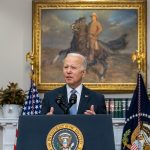It seems the Secret Service has mastered the art of blending in with the shadows—when it comes to protecting former President Donald Trump, they evidently decided to take a backseat. Recent revelations surrounding last month’s assassination attempt on Trump, which tragically resulted in the death of one of his supporters, have raised eyebrows and sparked outrage about the agency’s competence.
According to fresh evidence leaked from transcripts, local law enforcement officers found themselves stuck in a game of broken telephone with the Secret Service. The irony here is palpable. Just when things were about to get serious, a local police counter-sniper identified a suspicious character—a “younger White male with long hair”—lingering ominously with a laser targeting device. This individual’s description fits the profile of Thomas Matthew Crooks, who decided to take action 30 minutes later, but somehow, the message never made it to the Secret Service. Instead, it went to a trailer erected by local authorities, creating an all-new definition of “off the grid.”
To add insult to injury, the communication infrastructure was on par with a Wi-Fi connection in a 1990s coffee shop. As local officers scrambled to send a picture of Crooks, they found themselves battling a weak cell signal, leading to a hilarious, yet tragic, situation of officers realizing that their smartphones were not the superheroes they thought they were. One officer even complained that their attempts to share a photo were thwarted by the dreaded “internet and cell service is down” status. Wouldn’t it be nice if there was a special emergency channel for just such moments?
Delving deeper into this debacle, the local police commander took the old-school approach by calling a Pennsylvania State Police sergeant. The fact that critical information had to travel back and forth like it was on a slow boat, rather than being relayed directly to the Secret Service, highlights an alarming lack of coordination. Apparently, the cavalry could not be contacted directly to save the day, necessitating an intricate game of charades involving multiple parties and phones that seemingly belonged in a museum.
When yet another officer spotted Crooks attempting to scale the roof, there was barely enough time to react before Crooks turned his scope on the officer instead. One can’t help but wonder if the Secret Service was binge-watching an episode of ‘Cops’ instead of doing their actual job. An unnamed law enforcement whistleblower revealed that relaying information via cellphone was too slow for the rapidly evolving situation, essentially differentiating between a crisis and a casual chat about the weather.
In a nutshell, when it comes to ensuring the safety of a former president—the man who kicked off the “America First” movement—the Secret Service dropped the ball hard. The absence of established communication protocols seems less like a procedural oversight and more like an elaborate roast of government efficacy. One can only hope they pick up the pace before their next assignment, because judging by this incident, their “no comment” policy might need to be revisited.




